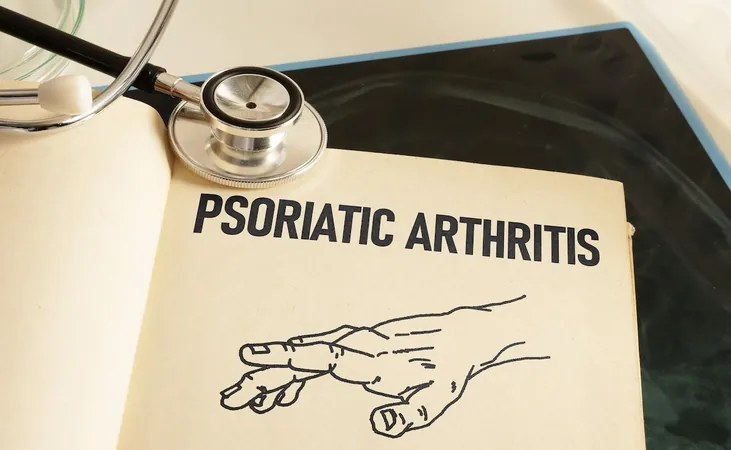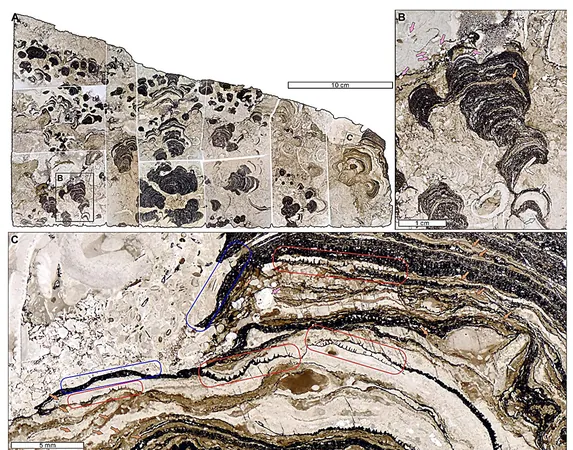
Breakthrough Findings: Bimekizumab Significantly Alleviates Pain and Fatigue in Psoriatic Arthritis Patients!
2025-01-15
Author: Yu
Exciting Developments in Psoriatic Arthritis Treatment
Exciting developments have emerged from the phase 3 trials of bimekizumab, a powerful new treatment for psoriatic arthritis (PsA). The BE OPTIMAL and BE COMPLETE clinical studies demonstrated that this innovative medication can drastically improve patient-reported pain and fatigue levels, making it a potential game-changer for individuals suffering from this debilitating condition.
Targeting Interleukins for Relief
Presented at the recent ACR Convergence 2024, the findings reveal that bimekizumab, developed by UCB Pharma, targets interleukin (IL)-17A, IL-17F, and IL-17AF, offering patients relief from the severe pain and fatigue commonly associated with PsA. The assessment took place at three crucial time points: weeks 16, 52, and 104 for those in the BE OPTIMAL trial, and at varying intervals for the BE COMPLETE trial.
FDA Approval Marks a Milestone
Following the positive outcomes observed in the studies, the FDA made a landmark decision on September 23, 2024, approving bimekizumab for the treatment of active PsA, nonradiographic axial spondyloarthritis with objective inflammation, and active ankylosing spondylitis.
Measuring Pain and Fatigue
In both trials, patient pain and fatigue were meticulously measured using the Pain Visual Analog Scale (Pain VAS) and the Functional Assessment of Chronic Illness Therapy (FACIT)-Fatigue. Patients included in the studies had to showcase significant swollen joint counts, indicating severe inflammation and were generally lacking in effective prior treatments.
High Retention Rates and Comparative Outcomes
Remarkably, the proportions of patients completing the trials were high, with retention rates of 83.3% in BE OPTIMAL and 80.5% in BE COMPLETE. An analysis of baseline metrics showed that participants in the BE OPTIMAL trial had a mean swollen joint count of 9.2, as opposed to 9.9 in BE COMPLETE, indicating that the two groups had comparable initial conditions despite some differences.
Significant Improvements Observed
The trial results were particularly striking for patients with a zero swollen joint count at the study's outset. For instance, after 16 weeks, 63% of these patients experienced a minimum 30% improvement in their pain scores, compared to just 30.2% among those with four or more swollen joints. This pattern continued at the 104-week mark, further emphasizing that managing swollen joints is crucial in improving overall patient outcomes.
Fatigue Improvements Noteworthy
While the improvements in fatigue were less pronounced, they were nonetheless noteworthy. In BE OPTIMAL, participants starting with 0 swollen joints saw significant enhancements in their FACIT-Fatigue scores, reflecting the importance of joint health in overall well-being. The authors highlight that the multifaceted nature of fatigue in patients suggests that pain relief should remain a primary target in treatment regimens.
Call for Joint Health Strategy
Given these compelling findings, the authors advocate for a strategy that prioritizes complete resolution of swollen joints in patients with psoriatic arthritis. Achieving this goal could prompt the most significant improvements in both pain and fatigue, offering hope to countless individuals battling the symptoms of this chronic disease.
Looking Ahead
With bimekizumab now on the market, the future looks promising for those struggling with psoriatic arthritis. As the medical community continues to explore and refine treatment options, patients can be optimistic as they seek relief from the burdens of pain and fatigue.
Stay Informed
Stay tuned for more updates on breakthrough treatments like bimekizumab that are reshaping the landscape of psoriatic arthritis management!




 Brasil (PT)
Brasil (PT)
 Canada (EN)
Canada (EN)
 Chile (ES)
Chile (ES)
 Česko (CS)
Česko (CS)
 대한민국 (KO)
대한민국 (KO)
 España (ES)
España (ES)
 France (FR)
France (FR)
 Hong Kong (EN)
Hong Kong (EN)
 Italia (IT)
Italia (IT)
 日本 (JA)
日本 (JA)
 Magyarország (HU)
Magyarország (HU)
 Norge (NO)
Norge (NO)
 Polska (PL)
Polska (PL)
 Schweiz (DE)
Schweiz (DE)
 Singapore (EN)
Singapore (EN)
 Sverige (SV)
Sverige (SV)
 Suomi (FI)
Suomi (FI)
 Türkiye (TR)
Türkiye (TR)
 الإمارات العربية المتحدة (AR)
الإمارات العربية المتحدة (AR)